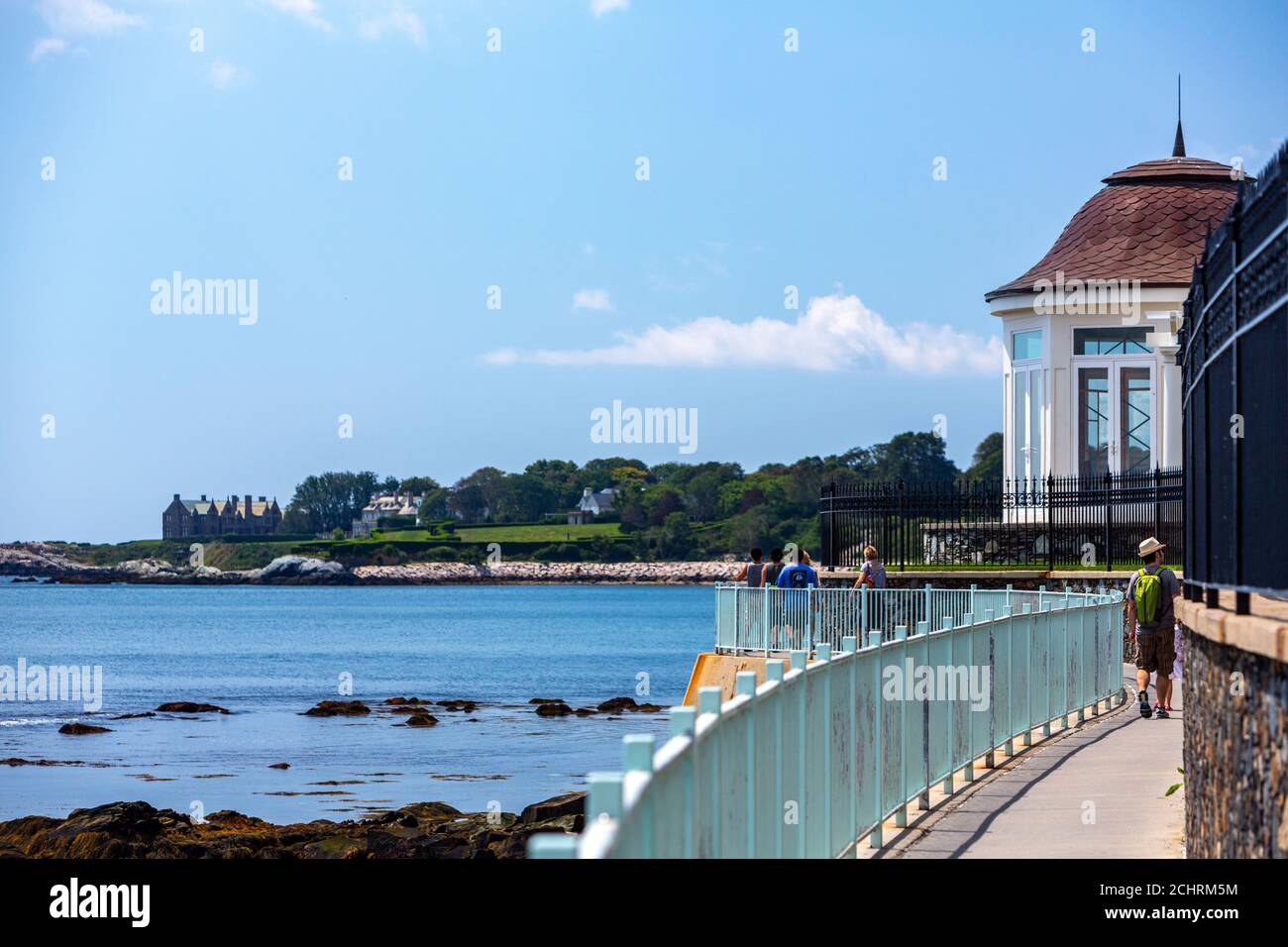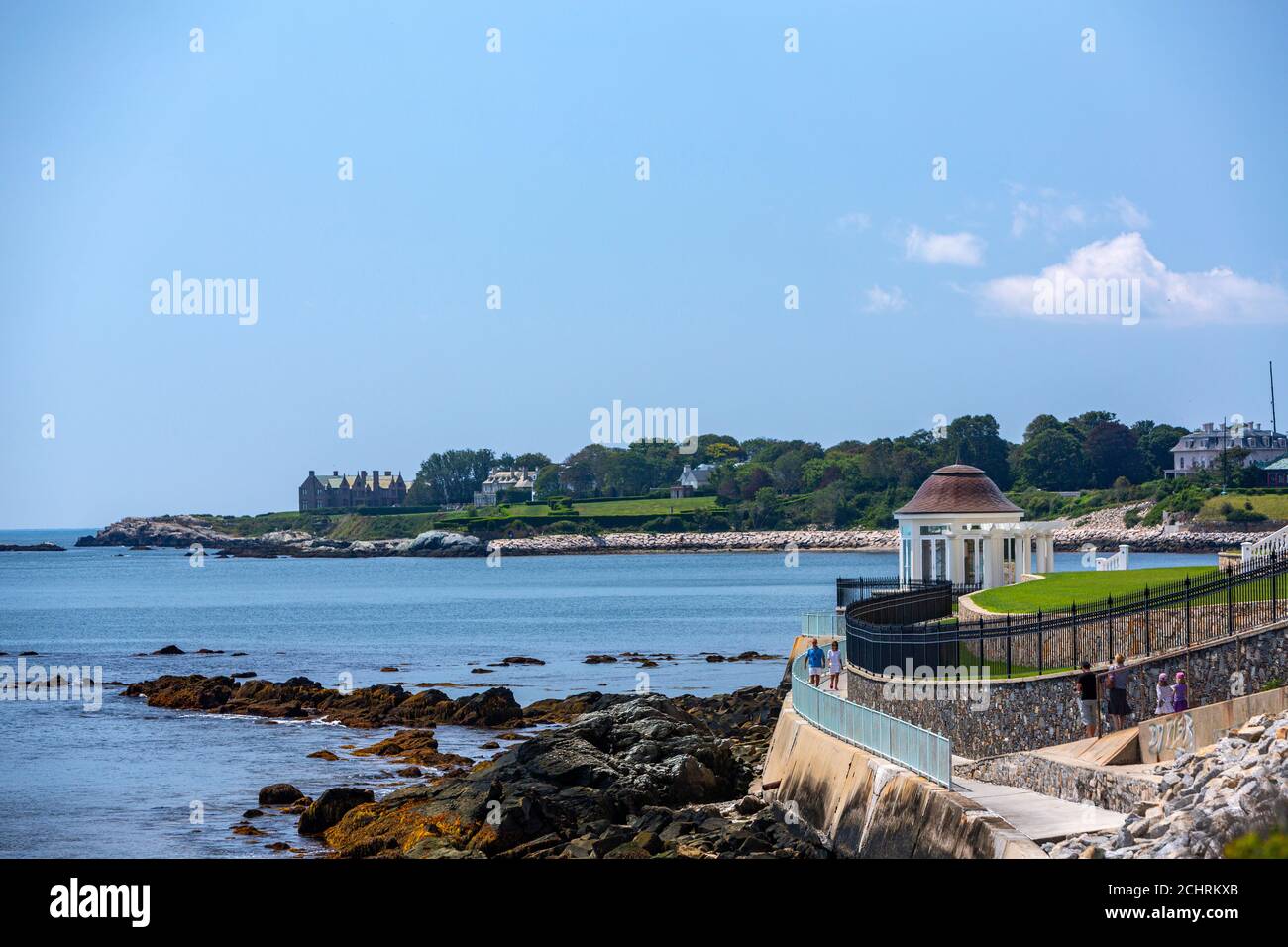
Newport, Rhode Island: A Tapestry Woven Through Centuries
Newport, Rhode Island, is more than just a picturesque coastal town; it is a living, breathing chronicle of American history, its cobblestone streets and stately homes whispering tales of colonial resilience, Gilded Age extravagance, and an enduring spirit of preservation. From its early days as a beacon of religious freedom to its transformation into the summer playground of America’s wealthiest families, Newport’s Historic District unfurls like a meticulously maintained scroll, offering an unparalleled journey through pivotal eras.
As the salty tang of Narragansett Bay air mingles with the scent of ancient timbers and blooming hydrangeas, visitors step into a landscape where every corner holds a story. This article delves into the multi-layered history of Newport’s Historic District, exploring its architectural marvels, its fascinating inhabitants, and the dedicated efforts that ensure its past remains vibrantly present.
The Colonial Crucible: A Cradle of Liberty

Newport’s story begins in 1639, founded by a group of religious dissenters fleeing the rigid Puritanism of Massachusetts Bay Colony. Led by figures like Anne Hutchinson and William Coddington, they established a settlement based on principles of religious freedom and tolerance, a radical concept for the time. This ethos quickly attracted a diverse population, including Quakers, Baptists, and Jews, laying the groundwork for a remarkably cosmopolitan port.
By the 18th century, Newport had blossomed into one of the busiest seaports in colonial America, its harbor teeming with ships engaged in the lucrative triangular trade. Merchants grew wealthy from sugar, rum, molasses, and unfortunately, enslaved people. This period, often referred to as Newport’s "Golden Age," saw the construction of elegant Georgian and Federal-style homes, public buildings, and houses of worship that still define the character of the historic core today.
A walk along streets like Thames, Spring, and Washington reveals this colonial legacy. The iconic Trinity Church, consecrated in 1726, stands as a magnificent example of Christopher Wren-style architecture adapted for the colonies, its towering steeple a familiar landmark. Inside, its tiered pews and soaring altar evoke centuries of worship.
Even more profound is the Touro Synagogue, dedicated in 1763, the oldest synagogue in continuous use in the United States. Its exquisite Palladian design and rich history symbolize Newport’s commitment to religious pluralism. George Washington himself, in a letter to the Hebrew Congregation of Newport in 1790, famously affirmed, "For happily the Government of the United States, which gives to bigotry no sanction, to persecution no assistance requires only that they who live under its protection should demean themselves as good citizens." This powerful statement, echoing Newport’s founding principles, cemented the town’s place in the narrative of American liberty.
Nearby, the Redwood Library and Athenæum, founded in 1747, holds the distinction of being the oldest continuously operating library in America. Its original structure, a neoclassical masterpiece by Peter Harrison, still houses an extraordinary collection of books and art, reflecting the intellectual curiosity of Newport’s colonial elite. These structures, alongside countless beautifully preserved private homes, offer tangible links to a pivotal era when the foundations of American ideals were being laid.
However, the Revolutionary War dealt a severe blow to Newport. Occupied by British forces for three years, its economy was devastated, its population scattered, and its once-thriving maritime trade brought to a standstill. It would take decades for the town to recover, and when it did, it was not as a bustling port, but as something entirely new.
The Gilded Age Grandeur: "Cottages" of Unfathomable Wealth
The mid-19th century witnessed Newport’s dramatic reinvention. The burgeoning industrial wealth of America’s post-Civil War era found its ultimate expression in this charming seaside town. Drawn by the cool ocean breezes, scenic beauty, and an already established social scene, families like the Vanderbilts, Astors, Wetmores, and Belmonts began to descend upon Newport, transforming it into the ultimate summer resort.

These titans of industry didn’t build mere houses; they constructed opulent "cottages" – a term used with an almost ironic understatement – that were, in reality, palatial estates rivaling the grandest European residences. Bellevue Avenue became the epicenter of this architectural arms race, a showcase of Gilded Age excess and ambition.
The Breakers, built for Cornelius Vanderbilt II in 1895, is perhaps the most iconic example. Designed by Richard Morris Hunt, this 70-room Italian Renaissance-style palazzo is a testament to the Vanderbilt family’s immense wealth and social standing. Its grand hall, vast dining room, and intricate detailing are awe-inspiring, offering a glimpse into a world of unimaginable luxury.
Just down the road stands Marble House, also designed by Hunt for William K. Vanderbilt and his notoriously ambitious wife, Alva. Completed in 1892, this mansion, inspired by the Petit Trianon at Versailles, cost an astronomical $11 million (over $300 million in today’s money), with $7 million spent on 500,000 cubic feet of marble alone. Alva Vanderbilt famously described it as her "temple to the arts," a clear statement of her family’s cultural aspirations and power.
Other notable "cottages" include Rosecliff, with its magnificent ballroom inspired by the Grand Trianon; The Elms, a French chateau designed for coal magnate Edward J. Berwind; and Rough Point, the sprawling English manor-style home of tobacco heiress Doris Duke. Each estate tells a unique story of its owners, their architectural tastes, and the elaborate social rituals of the Gilded Age, from lavish balls to extravagant garden parties.
This era was not just about architecture; it was about a lifestyle. The social season in Newport was a whirlwind of yacht races, polo matches, formal dinners, and elaborate entertainments. It was a time when fortunes were flaunted, reputations were made and broken, and the lines between old money and new were constantly being redrawn. The Gilded Age mansions are more than just buildings; they are artifacts of a specific cultural moment, revealing the aspirations and anxieties of America’s first true aristocracy.
The Architects of Preservation: Saving Newport’s Soul
Following the economic upheaval of the Great Depression and two World Wars, the Gilded Age began to wane. Many of the grand "cottages" became too expensive to maintain, and some faced demolition. It was during this period of decline that a new chapter in Newport’s history began – one of dedicated preservation.
A pivotal figure in this movement was Doris Duke, the reclusive tobacco heiress who purchased Rough Point in 1922. Distressed by the demolition of colonial homes in the 1960s, Duke established the Newport Restoration Foundation (NRF) in 1968. Her vision was not just to save buildings, but to restore entire streetscapes, breathing new life into the neglected colonial fabric of the town.
The NRF embarked on an ambitious project, acquiring and meticulously restoring over 80 colonial-era buildings, many of which had been altered beyond recognition or were slated for destruction. These homes were not just repaired; they were researched, historically accurate details were reinstated, and they were then rented out, ensuring they remained living, breathing parts of the community. As the NRF’s mission states, they sought to "preserve and protect the architectural and cultural heritage of Newport County, Rhode Island."
This commitment to authentic preservation, coupled with the efforts of the Preservation Society of Newport County, which acquired and maintains many of the Gilded Age mansions, has ensured that Newport’s historic district remains remarkably intact. Unlike many historic towns that have become theme parks, Newport retains a genuine sense of its past, where history is not just displayed but actively lived.
Beyond the Mansions: Maritime Heritage and Modern Vibrancy
While the colonial homes and Gilded Age mansions are undeniable centerpieces, Newport’s historic district offers much more. Its deep connection to the sea remains palpable. The working waterfront, particularly around Bowen’s Wharf and Bannister’s Wharf, bustles with activity, where fishing boats berth alongside luxury yachts. This area, with its charming boutiques, acclaimed restaurants, and vibrant nightlife, seamlessly blends the historic with the contemporary.
Newport’s maritime legacy is also intertwined with its sailing prowess. For decades, it was the host city for the prestigious America’s Cup, cementing its reputation as the "Sailing Capital of the World." The spirit of competitive sailing and a deep appreciation for the ocean are woven into the town’s identity.
Furthermore, Newport is home to the Naval War College, established in 1884, one of the oldest institutions of its kind globally. Its presence underscores a continuous military history stretching back to the Revolution, adding another layer to the district’s complex narrative.
Today, visitors can stroll the Cliff Walk, a scenic path that winds along the eastern shore, offering breathtaking views of the ocean and the backs of the Gilded Age estates. They can explore the charming shops and art galleries along Thames Street, dine in historic taverns, or simply soak in the atmosphere of a town that has embraced its past while evolving gracefully into the present.
Conclusion: An Enduring Allure
Newport, Rhode Island’s Historic District is a unique national treasure. It’s a place where the foundational ideals of American liberty are etched into colonial timbers, and the dazzling heights of industrial wealth are sculpted in marble and gold. It’s a testament to the power of preservation, where visionary individuals and organizations have worked tirelessly to safeguard an irreplaceable heritage.
To walk through Newport is to engage in a conversation with history, to witness the ebb and flow of centuries, and to understand how different eras have shaped the American story. From the humble beginnings of religious refugees to the opulent summer escapes of millionaires, Newport’s historic district offers a rich, layered tapestry that continues to captivate and inspire, ensuring its enduring allure for generations to come. It is, in every sense, a truly living museum, inviting all who visit to step back in time and feel the pulse of America’s vibrant past.


